Toyota Prius Prime Vs Kia Niro PHEV Comparison

Look at these two drama llamas.
Both the Toyota Prius and Kia Niro arrived with dramatically different bodywork for 2023. In the blue corner is the second-generation Niro; still coming in hybrid, all-electric, and the plug-in hybrid flavor found here, it ditches the jellybean look of the original for something altogether sharper, more challenging—and with a wee bit of supercar flavor. Yes, really. Over in the red corner is the fifth-gun Prius, also in plug-in Prime form, ditching the weird for the wonderful by way of a Lambo-like windshield rake and rethought interior. One practical, one personal.
Two different approaches to affordable plug-in power, but with nearly identical pricing? It’s a match-up we couldn’t ignore. The Automobile Journalists Association of Canada’s recent EcoRun in pretty British Columbia gave us the perfect opportunity to drive these two PHEVs back-to-back. In the battle of Toyota Prius Prime versus Kia Niro PHEV, here’s what we found out.
Interior and Cargo Space
Measurement | 2023 Toyota Prius Prime | 2023 Kia Niro PHEV |
|---|---|---|
Front Headroom | 37.5 in / 953 mm | 40.5 in / 1,029 mm |
Front Legroom | 42.4 in / 1,077 mm | 41.5 in / 1,054 mm |
Rear Headroom | 36.4 in / 925 mm | 39.6 in / 1,006 mm |
Rear Legroom | 35.9 in / 912 mm | 39.8 in / 1,011 mm |
Cargo Space | 20.3 cu ft / 575 L | 19.4 cu ft / 549 L |
Prius Prime: Toyota has gone back to the drawing board for the Prius interior. That dramatic windshield rake creates some packaging challenges, namely a dashboard approximately a mile long. The solution is equal parts function and form: a layered design trims the visual weight, while the instrument panel is set deep, deep in the dashboard. This gives the Prius cabin a distinctly cockpit-like feel, and allows the driver to set the wheel nice and low. With the instrument panel now clear of the wheel rim, there’s no need for a head-up display. This screen isn’t affected by polarised glasses the same way a HUD is, either.
Material quality has taken a step up, and we’re fans of the red highlight trim and ambient lighting. That being said, the Kia feels nicer—so long as you’re looking straight ahead. The Prius’ door panels are better finished than the Niro’s cheapo-reflecto bits, and there are good-sized storage bins, too.
Of course, given its shape, the Prius does trail its Korean competitor in passenger space. Headroom is its main disadvantage: with 37.5 inches (953 millimeters) up front and 36.4 inches (925 mm) in the rear, taller folks will feel the pinch, especially in the back. Front legroom is the Prius’ one advantage with an extra inch or so (42.4 in / 1,077 mm) but it gives up nearly four inches in the rear (35.9 in / 912 mm). Shoulder room is also down on the Niro, so you’ll think twice about going three-wide in back. That dramatic roofline also limits natural light in the back; at least the pano roof alleviates that somewhat. The seats themselves are quite comfortable, providing good lower back and under-thigh support.
It’s a similar story for cargo capacity: the Prius sacrifices practicality for style. Its liftback shape means it still has a useful, easily accessible 20.3 cubic feet (575 liters) of trunk space, which is actually more than you’ll find in the Niro. Dropping the rear seats only slightly increases that figure to 26.7 cu ft (756 L), however. The Prius Prime is not rated to tow.
Niro PHEV: Like the Prius, the Niro’s latest cabin is a dramatic departure from the previous iteration. The difference here is that it’s quite similar to other Kia products, unlike the individualist Toyota. That’s no bad thing: Kia has found a tech, angular groove, and it continues to work that magic here in its small quasi-SUV. It’s not the most colorful space, but the twin screens, concave surfaces, and subtle texturing make for a satisfying interior.
There is no clear winner in terms of quality here. While the Kia holds the edge in its futuristic dashboard design, it features cheap, hollow-feeling door panels and gratuitous amounts of piano black on the center console.
The boxy shape affords Niro owners just about as much space as SUVs the next size up. It beats the Prius on every measurement bar front legroom, which is still a very healthy 41.5 in (1,054 mm). Headroom is a full three inches better than the Toyota in either row: 40.5 and 39.6 in (1,029 and 1,006 mm), respectively. A flatter belt line (for more glass) and a huge 39.8 in (1,011 mm) of legroom means even adults should be happy spending plenty of time in the back row of the Niro PHEV. The combination SynTex and cloth seats are comfortable, but for this writer, not quite as supportive as the thrones in the Prius. No power adjustments whatsoever is also a knock against the Kia.
The trade-off for all that passenger space is an only-okay 19.4 cu ft (549 L) of trunk space. Flip the 60/40 folding seat flat with the floor, however, and the Niro PHEV will swallow over double the stuff the Toyota is capable of (54.6 cu ft / 1,546 L). Despite its SUV-ish look, the Niro PHEV is also not rated for towing.
Bottom Line: What really matters here is how often you plan on putting full-grown people in the back seats—or even two baby seats. If either is a regular occurrence, the sheer space of the Niro PHEV is hard to overlook. The Prius has the better front-seat experience, however.
Technology and Features
Prius Prime: As I mentioned above, the Prius features a unique digital instrument cluster set deep in the dashboard. It's a handy setup, keeping all relevant information easily in view. It pairs with a 12.3-inch infotainment screen (up from the standard 8.0 inches), running the latest and greatest Toyota Audio Multimedia interface. It's a welcome upgrade from the dark ages of Entune, with a simple interface that's very smartphone-like. We don't love Toyota's insistence on subscriptions for things like navigation, but thankfully wireless Apple CarPlay and Android Auto are included as standard. Response times are quick, and the big screen avoids the sometimes cramped look of the 8.0-incher. If you're going to be forced to use a touchscreen, more real estate requires less precision.
With the XSE, the Prius has the edge on features in this head-to-head—a fact that's reflected in its price, but more on that later. The driver enjoys power-adjustable seating here, plus there are heated seats for all outboard positions. We also dig the wireless charging cubby for keeping phones out of view.
Toyota Safety Sense 3.0 is standard on all Prii. Blind-spot monitoring, lane keep assist, lane departure alert, auto high beams, full-range adaptive cruise control, safe exit assist, road sign recognition—it's all here, and it all works as expected. The front and rear park assists in particular are useful, simply because the shape makes it hard to judge where the car's extremities lie. Other options, either on the XSE or XSE Premium, can include a digital key, 360-degree camera, auto-park assist, and even a solar panel roof (US only).
Niro PHEV: The Niro uses Kia's tried-and-true infotainment system, which debuted a few years back. The 10.25-inch central touchscreen isn't quite as snappy as the one in the Toyota, but it counters with an easy-to-understand menu system and built-in navigation that doesn't require a subscription. My complaints here are the same that they've been with every Kia: the menu can be hard to decipher at a glance due to the uniform color scheme and poor legibility of the typeface. The instrument cluster is mostly digital, but only the central portion is actually customizable.
The switchable touch panel below the central air vents is something of a mixed bag. I find it needlessly complicated to have to switch between climate and audio controls. But I get the argument that most people take a set-it-and-forget-it approach to climate, and being able to determine which is available on start-up is helpful.
Niro PHEV EX buyers get standard heated front seats in Canada, which are optional south of the border. Either way, you're looking at fully manual seat adjustments everywhere in the car, which feels a little chintzy at this price point. Kia's wireless phone charger is fine, but we miss the clever mail-slot setup from the K5. Bonus points for the seatback-mounted USB chargers, which are easier to reach for young folks than the typical console mounting point.
The Niro matches most of the Toyota's safety assists, including auto high beams, lane assists, full-range adaptive cruise control, and blind spot monitoring. It only gets rear parking sensors, however, and it lacks road sign recognition. That said, Highway Drive Assist provides a more natural hands-on cruise than the system in the Prius.
Bottom Line: This is a close category. The Prius' setup feels fresher, and it does have more safety kit. That deep-set instrument panel is the sort of thing that needs to be everywhere. On the flip side, the reliance on subscription models hurts the infotainment experience. The Kia's setup is more straight-forward to use, but the EX trim comes without some crucial features found in the Prius. Let's call this a wash.
Powertrain, Driving Feel, and Efficiency
Prius Prime: Let me tell you a story from EcoRun. As a host this year, at each stop I had to make sure my fellow journalists got going on their next driving leg without issue—but it’d also be nice if I was there to greet them. That meant that, on more than a few occasions, I couldn’t exactly hang around to eke out the ultimate fuel economy. Thus was the case with the Niro PHEV, and so on my next leg in the Prime, I told myself I’d treat it roughly the same. You know, for the sake of comparison.
On the pretty mountain road between Manning Park and Princeton, I spotted a Mazda3 Turbo that was not waiting around either. I assumed this was a local, and made it my mission to keep pace. And keep pace the 220-horsepower Prime did. So imagine my surprise when we pulled into the designated stop and out steps Mazda Canada’s PR guy. He asks how much I was pushing the Prius, and while I’m sure it was more than he was doing in his 250-horsepower, AWD hatch, it wasn’t an unreasonable or uncomfortable pace.
And the Prius still returned 43.5 mpg (5.4 L/100 km). That’s barely worse than the quoted 48 mpg (4.9 L/100 km) combined figure, and this was a) very hilly and b) really not trying. My first drive of the Prime back in March suggested it’s all too easy to exceed the quoted figures.
What’s more, the Prime is genuinely kind of fun. The low center of gravity and light, quick steering make it agile on the twisting mountain roads. The low-rolling-resistance tires ensure that its limits are wholly approachable at normal speeds, too. Being able to save up battery for when its most useful is an engaging pursuit as well.
Ease off and drive the Prius more like the average Prius driver, and it still impresses. The ride is soft and controlled, smoothing over larger bumps and keeping noise to a minimum. The brake pedal is smooth and linear, though I’d appreciate a little more control over the amount of regenerative braking. The 2.0-liter gas engine does get noisy when woken up for highway passes, but the added torque it enjoys over the Kia’s smaller 1.6-liter means it doesn’t have to rev high as often.
Niro PHEV: Yes, the Kia sacrifices power, and a good bit of it, too. The combined figures are 180 hp and 195 lb-ft; Toyota doesn’t quote a torque figure, but it’s almost certainly more. The Niro’s route was much flatter, which meant that its gas engine didn’t get as much time to rest as the Prime’s did when going downhill. The 1.6-liter only produces 106 lb-ft on its own (versus the 139 lb-ft of the Prime’s gas engine). That means it needs to call on the Electron Squad more often. My observed figure is a rough 32 mpg (7.4 L/100 km), but officially, the Niro PHEV is right on top of the Prime, with a quoted 49 mpg (4.8 L/100 km) combined figure.
The Kia’s all-electric range is slightly shorter, at 33 miles (55 kilometres) versus 39 miles (63 km). The benefit to that is a shorter Level 2 charge time, happening in just under three hours versus the four for Prime.
With smaller wheels and a softer suspension setup, the Niro is certainly the more comfort-oriented of this pair. When the gas engine isn’t buzzing along, it’s a calm experience, with a well-damped ride and great sight lines. Using a six-speed automatic instead of a CVT gives the Niro a “regular car” vibe around town, which should appeal to those who are experiencing electrified models for the first time. It might not be as quick as the Prius, but the PHEV is the quickest Niro of the family, and more than able to handle everyday tasks.
Props to Kia for giving PHEV drivers control over the level of regenerative braking, as well.
Bottom Line: The Prius has thrown off the shackles of boredom and become something fun with this latest generation. It’s still able to cruise and pamper, too—not quite as well as the Niro PHEV, but it gets close. That wider breadth of talents gives the Toyota the nod in this category.
Toyota Prius Prime vs Kia Niro PHEV: Styling
Prius Prime: Look at it. Look at the Prius. It’s… sexy now, right? Cohesive, clean styling, unmistakable wing-shaped headlights, the spindly 19-inch alloys; it all adds up to one of the most talked-about designs of the year, and certainly the most daring from Toyota in ages. Walk around back and the windswept shape appears to drape over the taillight setup, as if the lights are just poking out from underneath. The bright red paint only reinforces the supercar comparisons. Considering the last-gen model’s weird lip-shaped taillights and awkward proportions, we nominate the 2023 Prius Prime for Glow-Up of the Year.
Niro PHEV: The Niro isn’t without its own supercar aspirations. Sure, it’s a box, but peer behind the back doors and you’ll find a functioning air blade, which vents air behind the vertical taillights to keep the coefficient of drag down. It’s practically a family-friendly Audi R8, even if the PHEV doesn’t get the contrast color that the EV does.
What’s so interesting about the Niro is that it manages to look a part of the same wide Kia family without simply aping the styling of its siblings. The low-set main headlights would look super-awkward if not for the thin Tiger Nose grille stretching above them, providing a more cohesive “face.” As the PHEV is only available in mid-level EX trim in Canada, it features a large amount of matte black plastic cladding instead of the glossy stuff found elsewhere. That plus the faux skid-plate lower bumper styling give it a taste of the SUV flavor that the market practically demands these days.
Bottom Line: We said these two were different, and oh boy are they ever in stylistic terms. Both are more adventurous than ever before. We feel comfortable suggesting more people will enjoy the Prius’ shape; not that it’s better or worse, simply more approachable.
Pricing and Value
Prius Prime: This Prius Prime XSE sits in the middle of a three-trim lineup. Packaging is a little different on either side of the border: in the US, buyers can add the 12.3-inch touchscreen, fixed glass roof, and digital key—or any combination of the three. Canada includes the first two as part of the trim, but saves the latter for the XSE Premium.
The only other option on this car is the premium paint, which is strangely more expensive in America ($425 vs $255 CAD). As-equipped, our tester rings up as $38,855 ($45,105 CAD) including destination.
Niro PHEV: This Niro PHEV EX is the only plug-in trim in Canada, and stands as the starting trim in the US. Equipment levels are essentially the same. US buyers can check a Cold Weather Package box, which adds a PTC heater, heated steering wheel, and heated outboard rear seats. Canada’s packaging includes the first two as standard, but not the latter. (Stop us if you’ve heard this one before.) As equipped, this tester runs to $35,765 ($40,195 CAD) including destination.
American buyers also have the option of the swanky SX Touring.
Bottom Line: In their respective top trims, these two plug-ins are mere hundreds of dollars apart. Here, however, the Prius demands a hefty premium, especially in Canada. It does offer additional niceties over the Niro, like the bigger infotainment, powered seats (plus heated rears), and more power plus range. Whether that’s all worth the extra outlay is a tougher call, however.
Toyota Prius Prime vs Kia Niro PHEV: Verdict
We couldn’t have found two same-but-different plug-ins to better illustrate the level of choice buyers have now. Both of these offerings are (relatively) affordable, stylish, well-equipped, and capable of saving you hundreds of dollars in gas bills every year.
If you’re the practical sort, it’s hard to go wrong with the Kia Niro PHEV. Offering Sportage space in a Seltos size is an achievement in itself, and the Niro adds an extra dash of style and comfortable cruisability to the mix. I stick to my earlier statement that this is the sweet spot of the Niro range—which makes me sad Canada continues to offer it in just one trim.
But it’s the Prius Prime that proves the dark horse of EcoRun. Going from dowdy to dynamite, its ultra-stylish looks hide a still-useful layout, smart cabin design, and a low-key fun chassis balance. With the Corolla Hybrid handling the ultra-rational side of the market, the Prius can spread its wings as the hybrid halo model it always deserved to be. So long as you don’t need to regularly cram four other adults in it with you, the Prius Prime is my pick of this face-off.
Become an AutoGuide insider. Get the latest from the automotive world first by subscribing to our newsletter here.

Kyle began his automotive obsession before he even started school, courtesy of a remote control Porsche and various LEGO sets. He later studied advertising and graphic design at Humber College, which led him to writing about cars (both real and digital). He is now a proud member of the Automobile Journalists Association of Canada (AJAC), where he was the Journalist of the Year runner-up for 2021.
More by Kyle Patrick



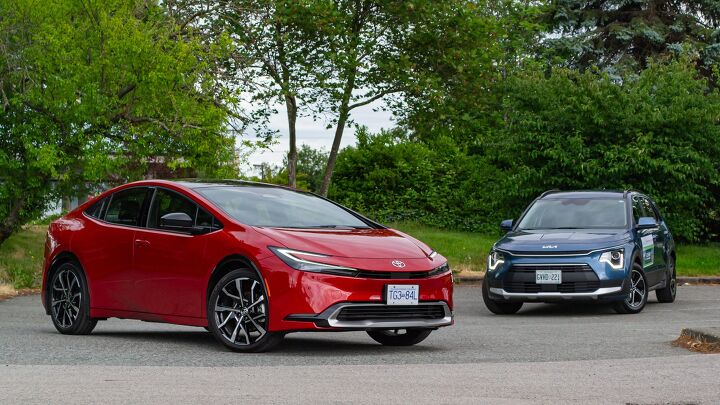

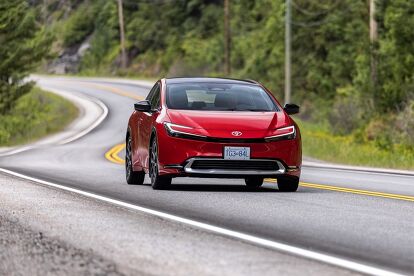



























































































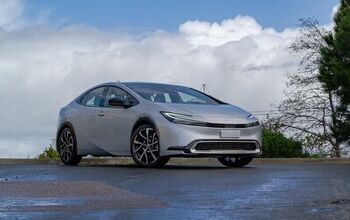

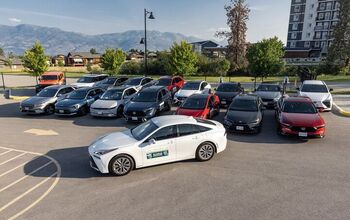
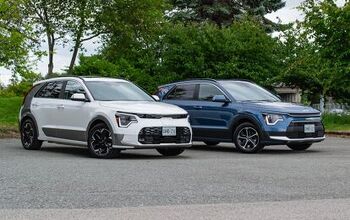
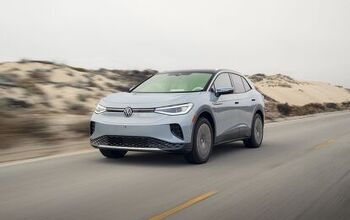

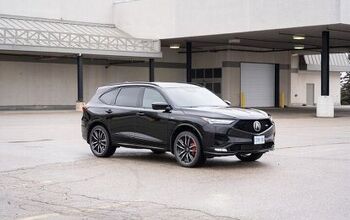

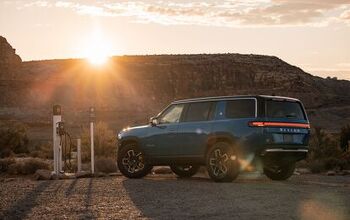



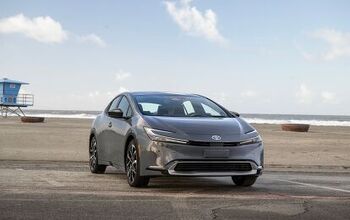

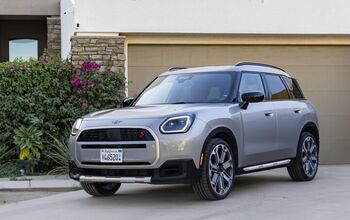

Comments
Join the conversation
not sure where the tester was putting his hands regarding "Either way, you're looking at fully manual seat adjustments everywhere in the car, which feels a little chintzy at this price point."
because the Kia PHEV EX has a power srivers seat std. at the $35,765 price point
also the more price comparitive trim to toyota's XSE is the Kia SX, for like $500 more for the SX you get way more vehicle than a Prius XSE.
Yes the Prius Prime is a great vehicle but it's bang for the buck trim is the LE (not that toyota will make many of them) which has most of the features of the Kia EX but at a $32,xxx price point
i have the 2023 Prius Prime XSE model. Despite what the writer says, it has three user selectable levels of regenerative braking.